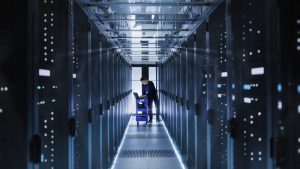This audio was created using Microsoft Azure Speech Services
New York is one of the top 5 cities in the USA in terms of growing solar power usage, energy storage, etc, and is currently setting the cornerstone for emerging distributed energy resources (DERs) through advanced technology and revising energy regulations. In recent years, the cosmopolitan city has been striving to bring some drastic changes to energy regulations to promote and foster green energy initiatives.
The current electrical grid of New York is facing a downward trend but the future seems bright for it. The Reforming Energy Vision proposal from New York Department of Public Service has shown good potential for the benefit of electricity customers through cost effective use of distributed energy resources. This will help New York emerge as the leader in DER which will enable it to transfer cheaper energy rates on to the customers.
Why is New York Changing the Electric Energy Setup?
The city is dealing with a multitude of problems related to infrastructure that is rapidly depreciating, which is likely to be extremely high maintenance in the near future; going up to triple digit numbers. Since the aging equipment lacks end-use efficiency, therefore customers are now inclining towards alternate distribution sources for cheaper energy, such as natural gas.
The proposal from New York Department of Public Service will encourage a market where a group of energy stakeholders can create a cohesive system to develop end-user efficiency, storage and distribution to transfer the benefits to the customers.
How Effective Will the Distributed Energy Resources be to Curb Power Loads?
Distributed energy resources include a wide number of units that have the capability to reach multiple consumers simultaneously. They are technically sound to assist the installation of the assets, expansion of services and plans to facilitate the final customer.
These entities may or may not include housing associations, local government entities, energy regulation companies, utility regulation associations, real estate and telecommunication companies, etc.
The entire system will be extremely effective in terms of mitigating costs and increasing efficiency. It will have a direct positive impact on the end user and it will result in a significant decline in power loads, creating more opportunities for power generation at lower costs. Consequently, this cycle is likely result in a more eco-friendly solution if the resources for energy generation do not leave a carbon footprint.
The Usefulness of the Plan for the Utilities
As the customers today have become more aware, they want fast responses, quicker energy restoration and simple bill system without complications. Also, since the increasing awareness and realization of the benefits of green energy, customers want meaningful decisions from the government to provide them with clean and green energy that will have long term positive effects. While the proposal is still in a developing phase, there are more questions than answers associated to it.
Utilities today need to think of ways to provide efficient energy solutions at low costs for all customers, and they can achieve this through intelligently investing in research and development, and have future focused strategies. This will drive change and capabilities with the right use of technologies to cope with the changing energy needs and rising customer demands.
Is Green Energy the Solution to Curb Power Costs through DERs?
Perhaps, green energy is the only possible solution to curb power costs in an eco-friendly manner. While transferring the entire power distribution and energy development network on green energy may have initial high costs, it is likely to have sustainable long term effects. Using renewable energy is not the thing of the past, but requires immediate action from associations and responsible entities to think of innovative and technology forward ways to use renewable energy as a primary source of energy generation to enhance end-user efficiency and leave behind a cleaner environment.
Contributor:
Steward H udson is a researcher/blogger with experience writing for multiple industries including health, energy, finance, and more. He currently writes for Currentsolutionspc.com.
udson is a researcher/blogger with experience writing for multiple industries including health, energy, finance, and more. He currently writes for Currentsolutionspc.com.




Conversation
vighneswari1234
6 years ago
good information. thank you for sharing such a nice article.